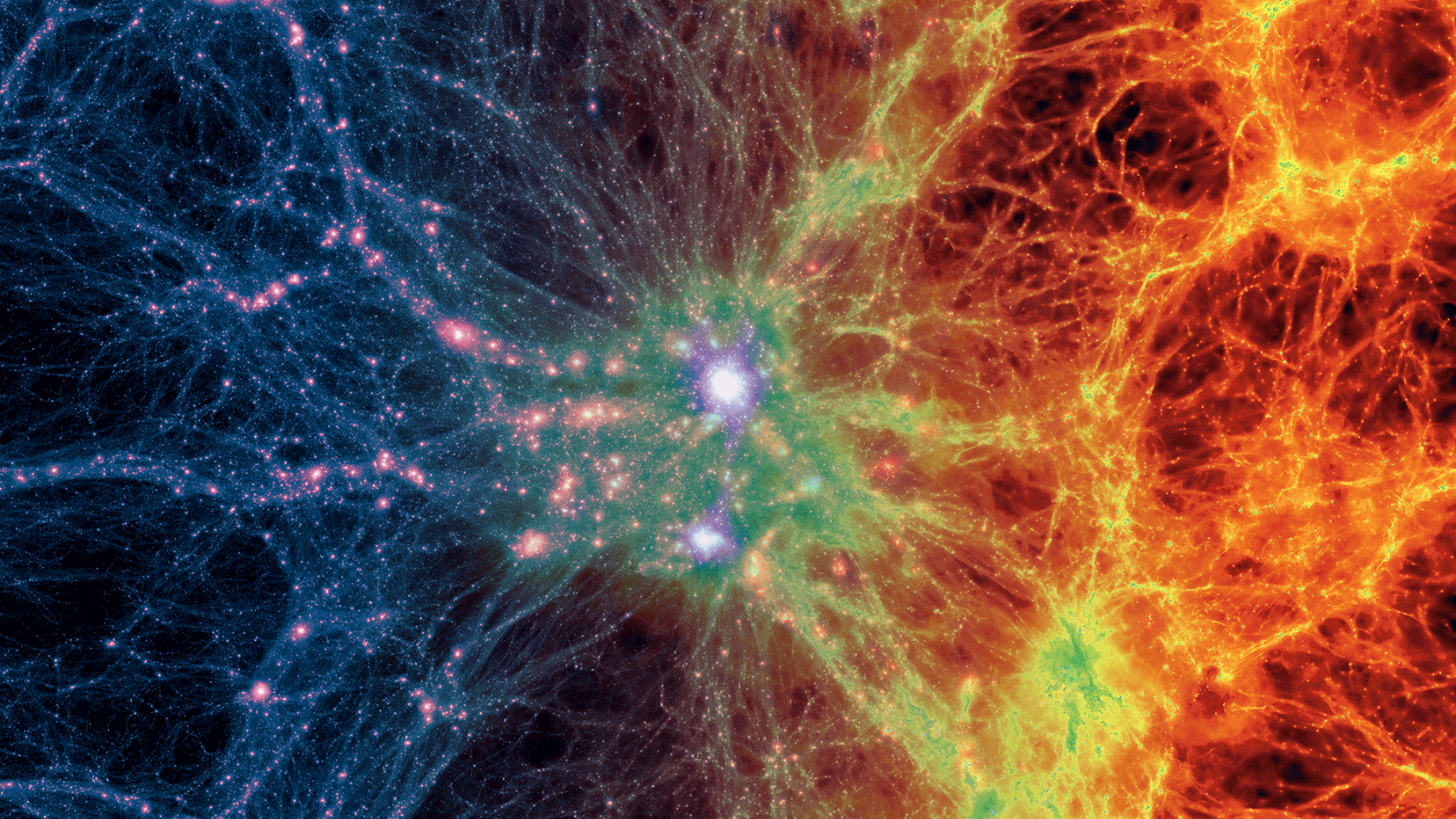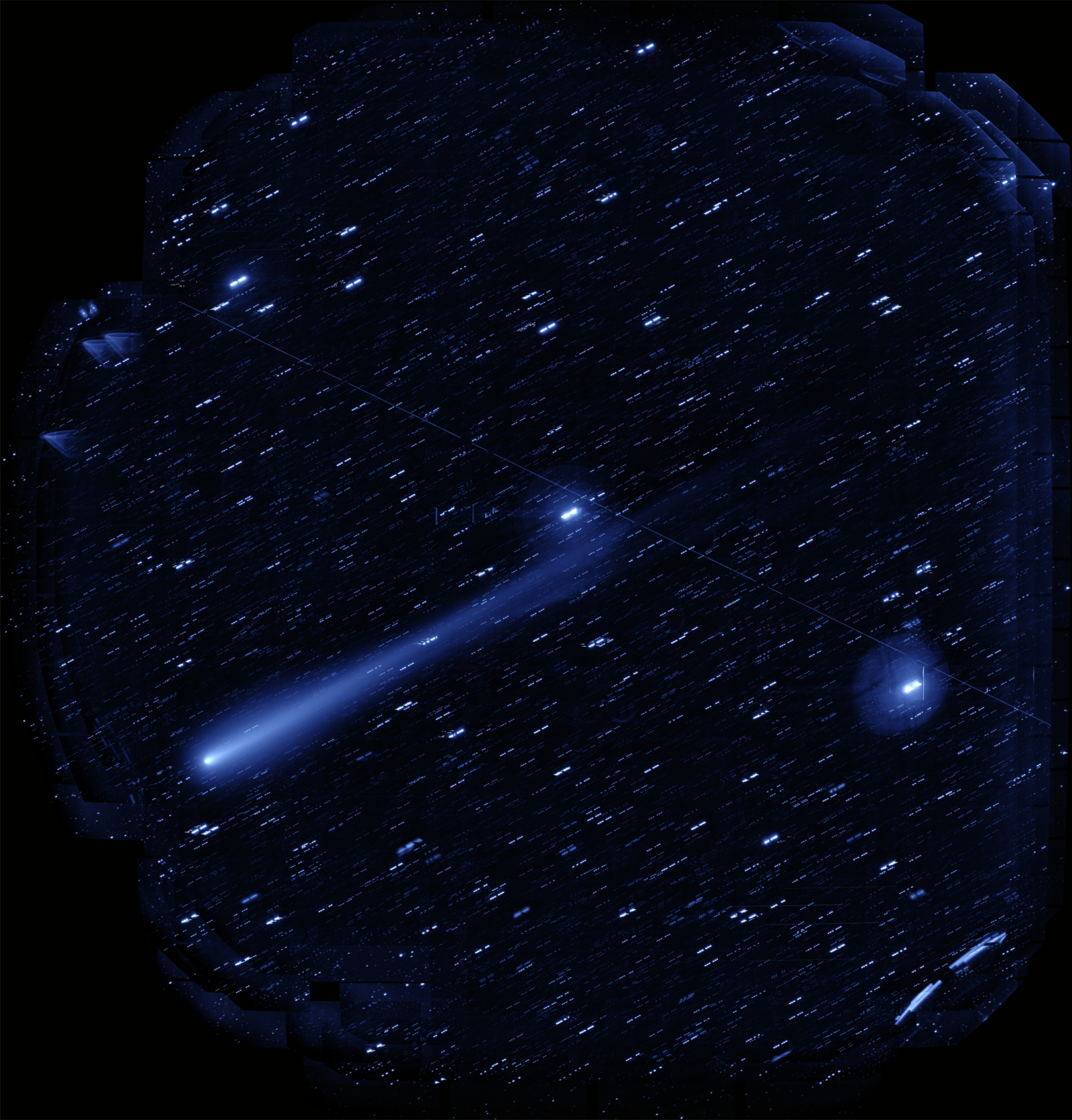
Editor's Update: Comet ISON may have survived its fiery trip around the sun. For the latest news on the comet, read: Comet ISON Gets Roasted by Sun and Vanishes, But Did It Survive?
The moment of truth has finally arrived for Comet ISON.
The icy wanderer is slated to skim just within 684,000 miles (1.1 million kilometers) above the surface of the sun for a Thanksgiving Day encounter today (Nov. 28) in a cosmic maneuver that skywatchers and scientists alike have been anticipating since the comet's discovery in September 2012. The solar passage could destroy Comet ISON, or make it brighter than ever, scientists say.
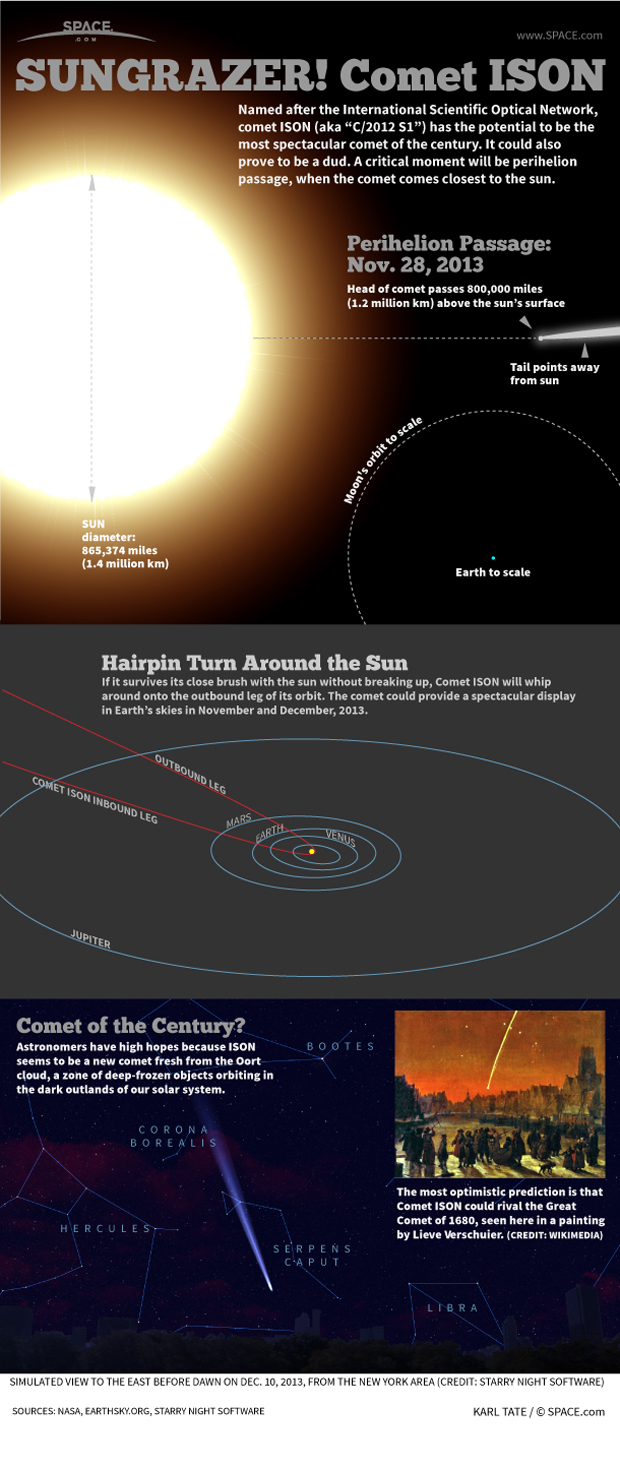
Researchers will discuss the solar flyby and show live spacecraft images of Comet ISON during a NASA-hosted Google+ Hangout from 1 p.m. to 3:30 p.m. EST today (1800 to 2030 GMT). You can watch the event live on SPACE.com, courtesy of NASA TV. [Comet ISON's Sun Encounter: Complete Coverage]
If Comet ISON survives its Thanksgiving Day plunge, it could put on quite a show for skywatchers in early December and cough up more of its secrets to astronomers. But nobody knows just what the icy object is going to do.
"This comet is giving us quite a ride," Carey Lisse, a senior research scientist at the Johns Hopkins Applied Physics Laboratory in Laurel, Md., told reporters Tuesday (Nov. 26). "It's going to be hard to predict exactly what's going on."
A fleet of sun-watching spacecraft are tracking Comet ISON's solar passage. The NASA-European run SOHO spacecraft, NASA's twin STEREO probes and the Solar Dynamics Observatory are all recording constant views of the incoming comet. Today, astronauts on the International Space Station will also try to observe the comet as they celebrate Thanksgiving in space.
Breaking space news, the latest updates on rocket launches, skywatching events and more!
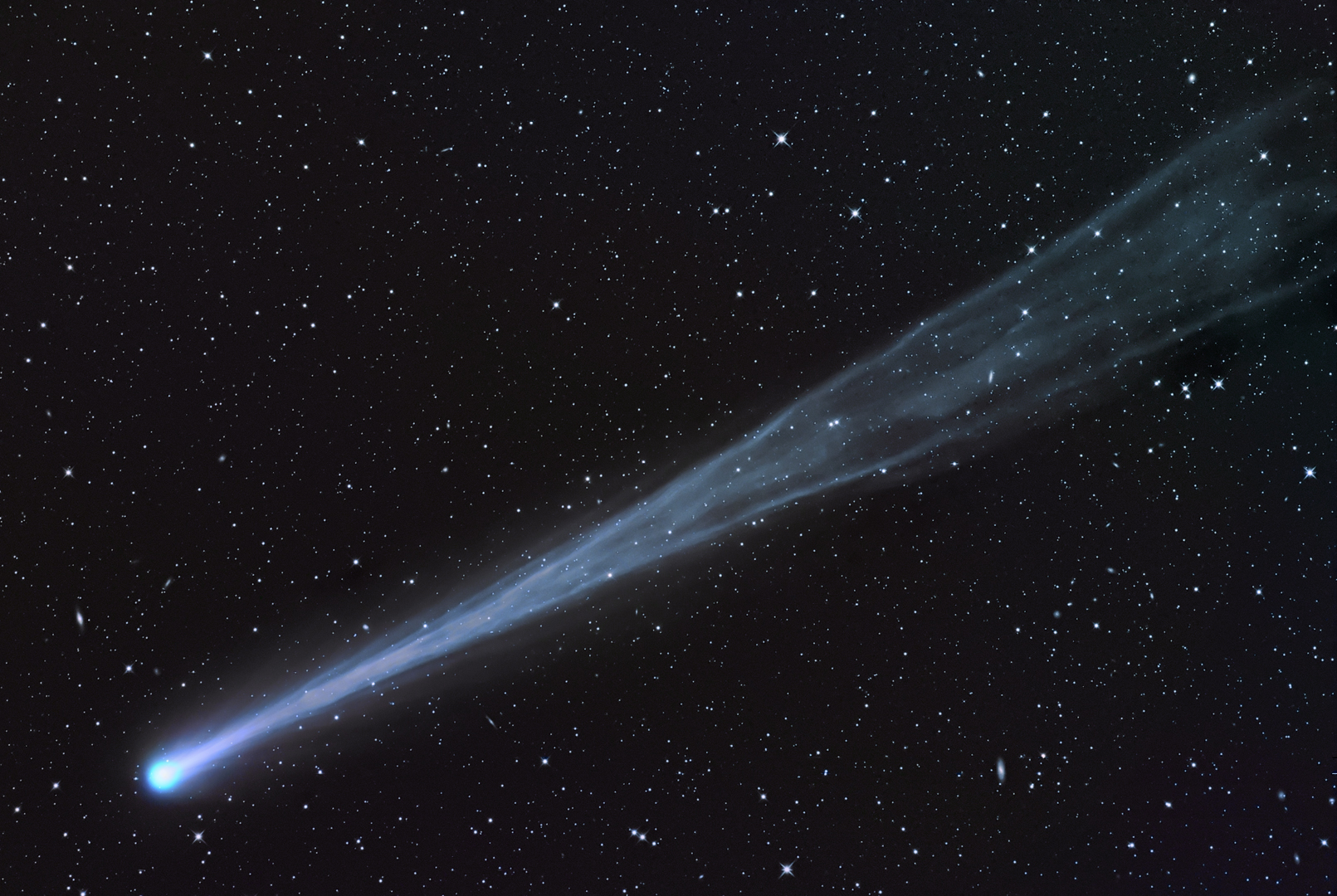
A pristine comet
Comet ISON is making its first-ever trip to the inner solar system from the distant and frigid Oort Cloud. So it's still a relatively pristine body whose volatile components have yet to be baked off by the intense heat of the sun.
"Comet ISON is a relic," Lisse said. "It's a dinosaur bone of solar-system formation. You need comets in order to build the planets, and this comet has been in deep freeze in the Oort Cloud, halfway to the next star, for the last four and a half billion years."
Scientists have never before been able to watch an Oort Cloud comet dive past the sun, explaining why they're so excited about ISON. By noting which materials boil off the the object at various distances from our star, they can get an unprecedented look at comet composition and, by extension, what the solar system looked like in its earliest days.
Further, Comet ISON also serves as a solar probe of sorts, researchers say. For example, some of the comet's particles will cling to the magnetic field in the sun's atmosphere during today's flyby, allowing scientists to test out some of their theories about the processes occurring in this extreme environment.
"We get a huge amount of science from the solar observations — not only about the comet, but we learn a tremendous amount about space weather and the sun as well," said comet scientist Karl Battams, of the Naval Research Laboratory in Washington, D.C.
What will ISON do?
Scientists and skywatchers hope ISON survives today's close solar approach, allowing more observation as it whips around the sun and heads back out into the depths of space. But at the moment, nobody knows what will happen.
Three possible fates await Comet ISON, according to Don Yeomans, manager of NASA's Near-Earth Object Program Office at the agency's Jet Propulsion Laboratory in Pasadena, Calif.
"It could be tough enough to survive the passage of the sun and be a fairly bright naked-eye object in the early morning sky in the first week of December," Yeomans said in a statement. "Or, the sun could actually pull it apart. The tidal forces could actually pull this comet apart and so it becomes several chunks rounding the sun and putting on a great show again in early December. Or, if the comet is very weak, it could break up into a cloud of dust and be a complete bust in December."
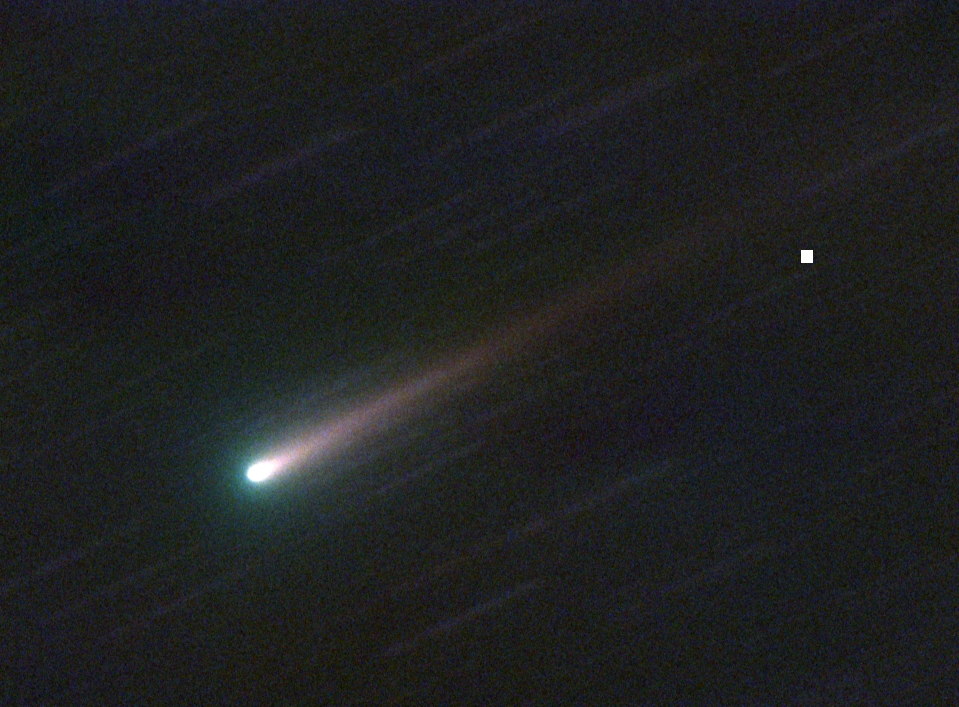
If ISON doesn't fizzle out completely, skywatchers should aim to spot the comet — or its fragments — 10 to 14 days from now, low in the sky just before sunrise and just after sunset, Lisse said. (Immediately after the flyby, ISON will be too close to the sun to be seen.) Viewers in the Northern Hemisphere will get much better looks than those in the South. [How to See Comet ISON in the Night Sky]
Lisse isn't particulary optimistic about Comet ISON's chances, giving the icy wanderer a 40 percent chance of putting on a good sky show after today's encounter.
"But I also want to say, I'm thrilled to be wrong," he said.
Editor's note: If you snap an amazing picture of Comet ISON or any other night sky view that you'd like to share for a possible story or image gallery, send photos, comments and your name and location to managing editor Tariq Malik at spacephotos@space.com.
You can follow the latest Comet ISON news, photos and video on SPACE.com.
Follow Mike Wall on Twitter @michaeldwall and Google+. Follow us @Spacedotcom, Facebook or Google+. Originally published on SPACE.com.
Join our Space Forums to keep talking space on the latest missions, night sky and more! And if you have a news tip, correction or comment, let us know at: community@space.com.

Michael Wall is a Senior Space Writer with Space.com and joined the team in 2010. He primarily covers exoplanets, spaceflight and military space, but has been known to dabble in the space art beat. His book about the search for alien life, "Out There," was published on Nov. 13, 2018. Before becoming a science writer, Michael worked as a herpetologist and wildlife biologist. He has a Ph.D. in evolutionary biology from the University of Sydney, Australia, a bachelor's degree from the University of Arizona, and a graduate certificate in science writing from the University of California, Santa Cruz. To find out what his latest project is, you can follow Michael on Twitter.
